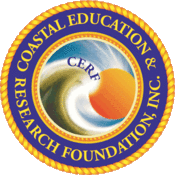Human Impact on Coastal Erosion in Taiwan
Abstract
Coastal erosion is an islandwide problem in Taiwan. On the basis of the result of the most recent survey, more than 80% of the island's sandy coasts have undergone erosion over the past 3 decades. Naturally and historically with the specific tectonic environment and uplifting rate in Taiwan, sufficient sediments had been yielded and transported to the coastal area, resulting in an advancing shoreline along the trailing edge coast during the last several centuries. However, human interventions have contributed significantly to the erosion in more recent times. In this paper, documented examples are chosen to address how human-induced changes have made profound impacts on the coastal erosion in Taiwan. The information presented will provide a better understanding of the coastal processes, and solutions to the erosion problem for the benefit of others in different parts of the world.

Spatial diversity of coastal erosion in Taiwan.

Schematic view of sediment budget to a coast (Horikawa, 1988).

Distribution of major rivers and their average annual runoff in Taiwan (1949–2002).

Shoreline changes at Linco and Bali coast due to improvement of the flood channel at Tanshui River, Taipei, Taiwan. Construction of Taipei Harbor has been in progress since January 1993.

Shrinkage and landward migration of a series of barriers north of the Tsengwen River mouth, resulting from loss of sediment supply of the Tsengwen River.

Dune erosion and shoreline retreat at Wangziliao barrier, Tainan County.

Satellite photos showing Waisanding barrier in 1986, 1994, and 2001.

Historical evolution of Waisanding barrier.

Beach erosion and shoreline retreat at Ilan coast. (a) Aozujia; (b) Daken.

Extension of the north breakwater at Taichung Harbor with sand accretion updrift and erosion downdrift: (a) initial stage (1972); (b) original layout (1986); (c) after breakwater extension (1995); (d) comparison of shoreline changes.

Beach volume changes in each sector adjacent to Taichung Harbor. The sector between north breakwater and north groin (sector B) was in accretion from 1976 to 1993; the sectors south of the north breakwater (sectors C–E) were in erosion from 1976 to 1987.

Sand deposition in the harbor basin due to north breakwater extension at Hommei fishing harbor: (a) top view; (b) wave-induced nearshore currents before breakwater extension; (c) wave-induced nearshore currents after the extension.

The Gold Coast in Tainan city. A 150-m-wide beach was destroyed and retreated during Typhoon Herb in 1996:(a) vertical seawall at Gold Coast; (b) beach erosion in the front of the seawall; (c) shoreline recovery at the Gold Coast after Typhoon Herb.

Beach erosion at Chijin coastal park in Kaohsiung city (a) before construction of coastal park building; (b) after construction of the park building; (c) after protection (2003).

Distribution of land subsidence around Taiwan. (SA = subsidence area recently; AS = accumulated subsidence depth; SR = subsidence rate in last 4 y)

Land subsidence and shoreline retreat at Wenfong coast: (a) shoreline retreat; (b) land subsidence.

